|
Lobos Creek Valley located in the GGNRA (Presidio) San Francisco, CA.
A habitat for native plants was constructed in the 1990's at Lobos Creek Valley, funded largely from mitigation funds
of the 25th Ave. sewer collaspe. The original vegetation was removed, and sand was delivered to landscape over a gravel base.
The cultivated area is about 13 acres (in the middle of the photo), with plans for expansion. The site is bordered by
Lobos Creek and Lake St. residences, Presidio Trust offices & parking lot, Camino Del Mar/Lincoln St, Monterey Cypress
trees and Wherry Housing, and the empty Public Health Hospital bldg.
| Beginning of the habitat trail |
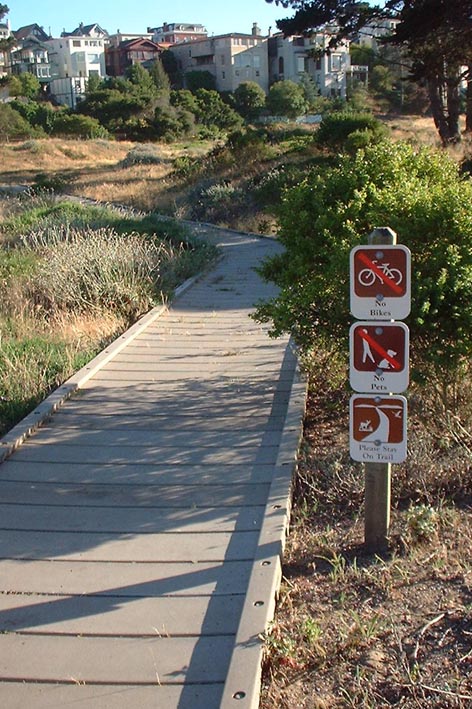
|
"No Bikes. No Pets. Please Stay on the Trail." Visitors are restricted to a boardwalk. To study the exhibited native
plants, one must look from the walkway.

....and No People!
Lobos Creek Valley once had a playing field, hikers and other recreational visitors, but is now mostly empty. (Personal
observation: During numerous visits, the only people I have seen on the boardwalk were two boys skateboarding on the planks.)
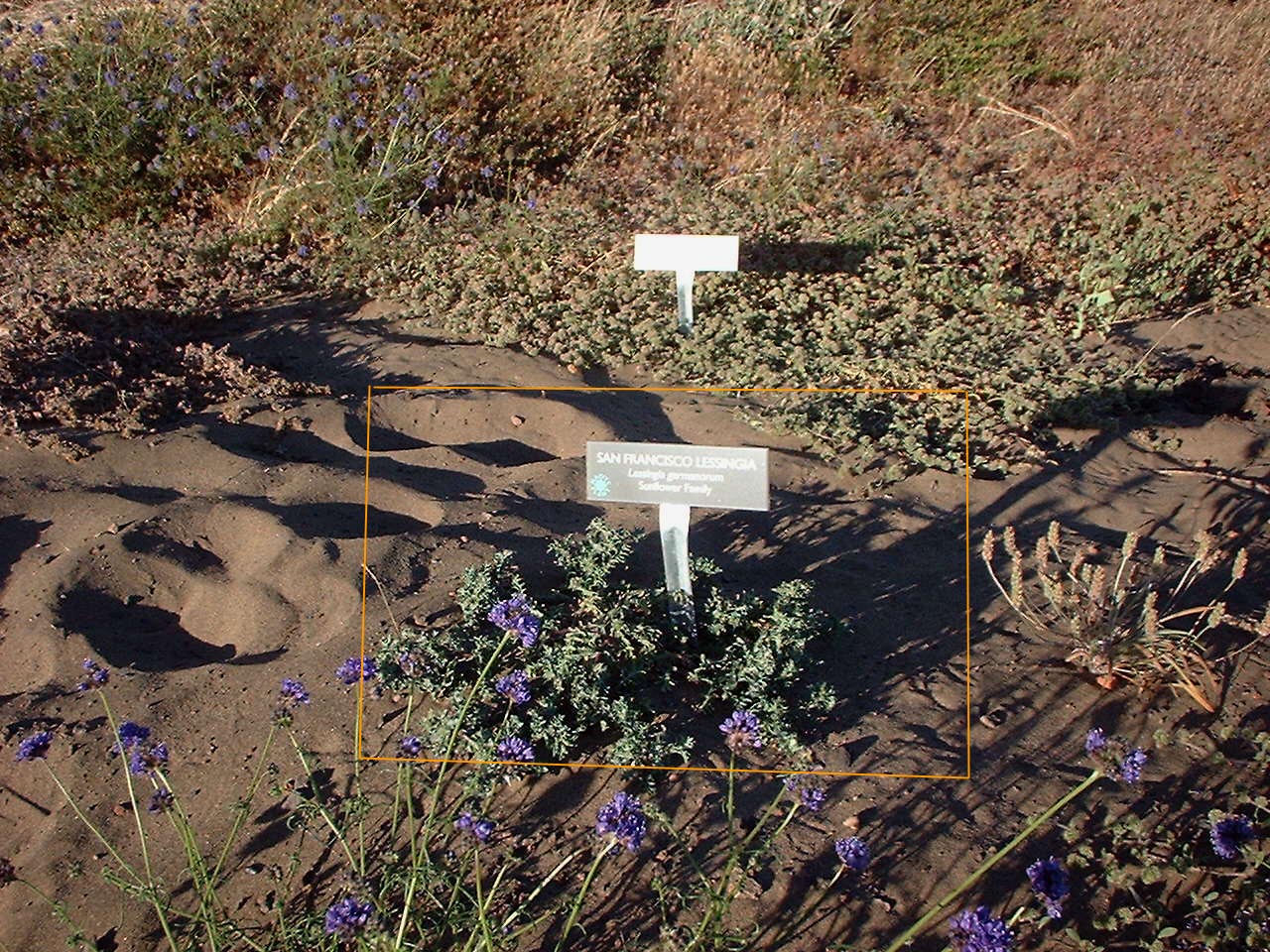
|
| Lessingia germanorum, an endangered species (outlined) |
In the 1980's, there were about 250 lessengia plants at Lobos Creek Valley, later dropping to 19 plants. In 1995-6 Lobos Creek
Valley was graded, landscaped, and seeded, with a resulting increase in lessingia. In 1998 the population peaked at 17,000,000
million. As other dune vegetation was established, the lessingia population adjusted to a more sustainable range of approximately
350,000 to 1,300,000 plants.
Lessingia, an annual herb, is a member of the aster family. It grows on exposed patches of relatively immobile sand. Its
height can range from a couple of inches to about 1 foot tall. During late summer through fall, small yellow flowerheads will
appear.
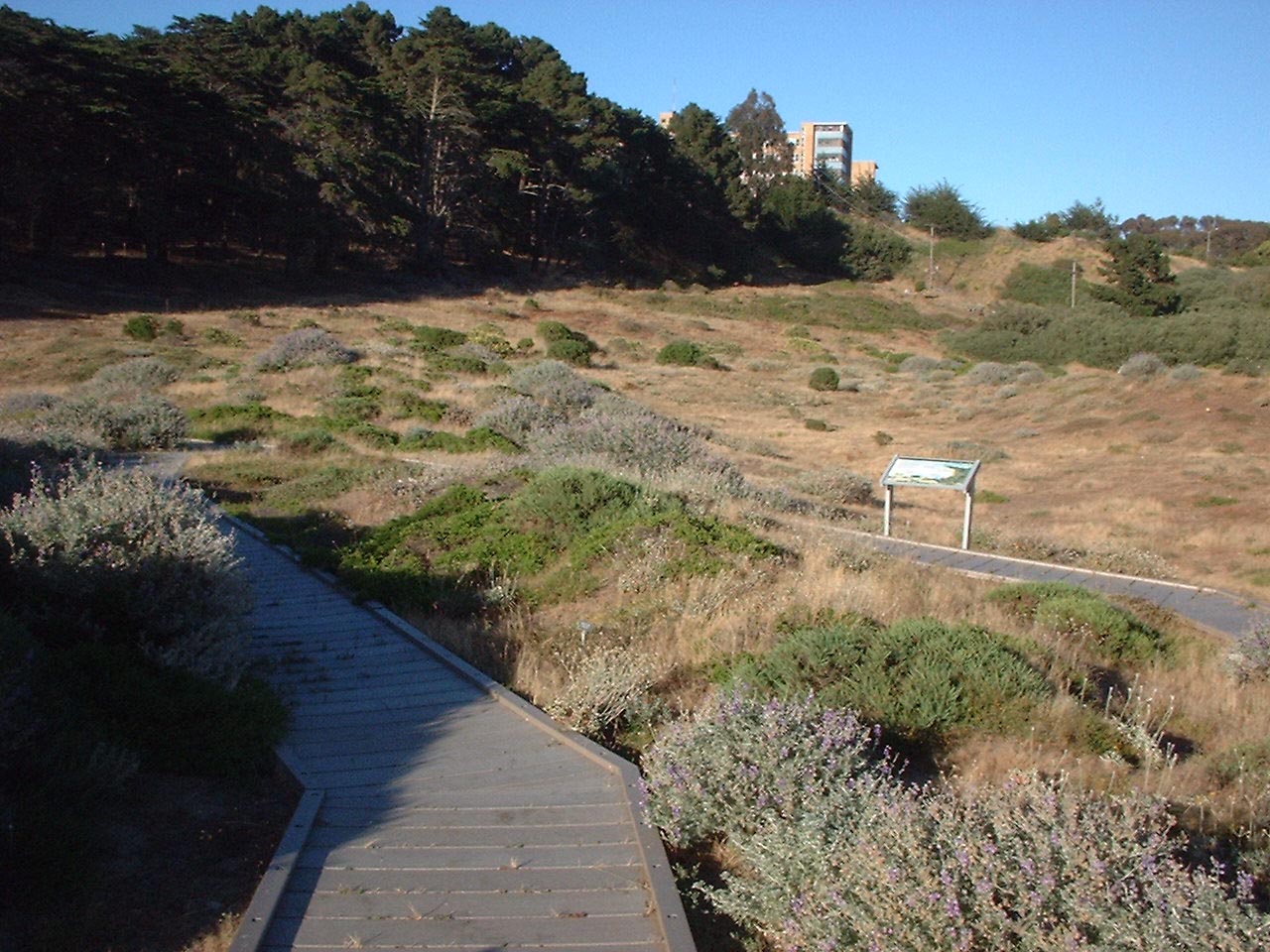
|
| Monterey Cypress and Monterey Pine trees border |
Lessingia, National Park Service
The Draft Recovery Plan for lessingia (and Raven's manzanita) calls for the expansion of habitat sites for coastal plants,
at a cost of $17,000,000. The plan proposes removal of approximately 3,800 trees in SF, including the forest bordering the
Lobos Creek habitat. (Draft Recovery Plan for Coastal Plants of the Northern San Francisco Peninsula, US Fish and Wildlife
)
EPA Draft Recovery Plan
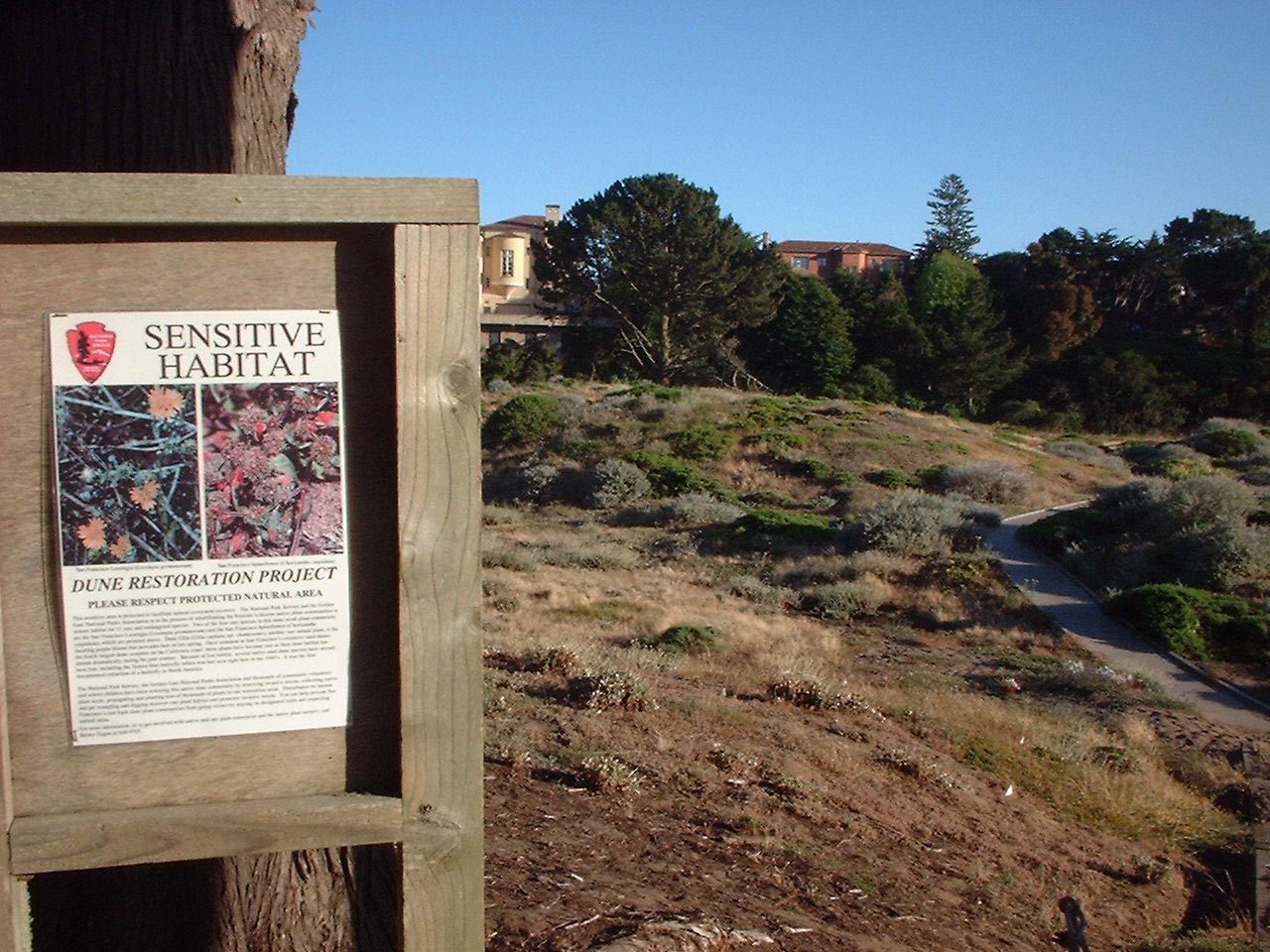
"Sensitive Habitat"
People are required to stay on the boardwalk, but ironically, Lessingia needs disturbances.
After being established, moderate trampling is required for lessingia to thrive.
| Other end of the boardwalk |
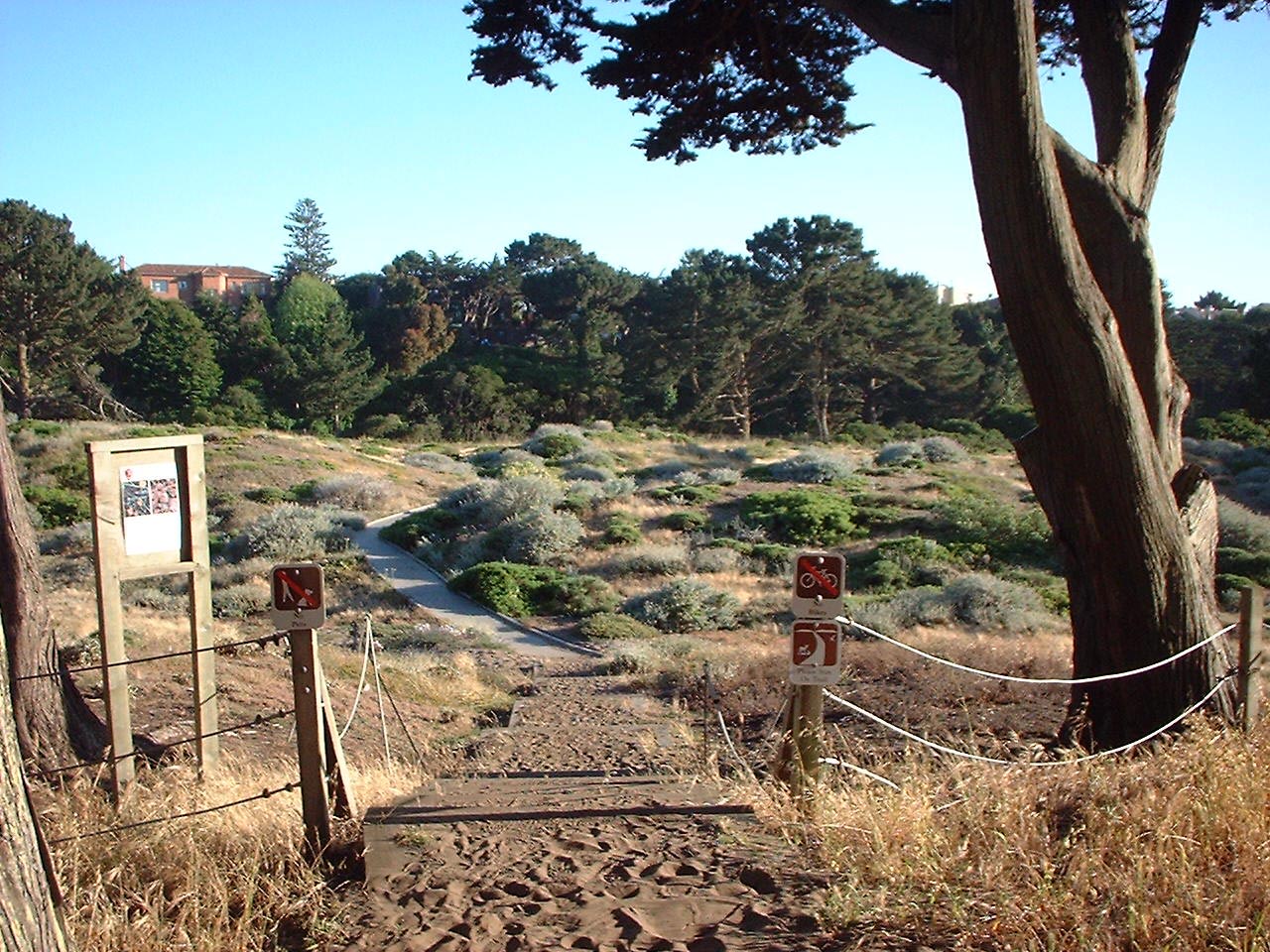
|
North opening of the boardwalk, with restriction signs.
Lobos Creek Valley is an excellent exhibit of coastal dune native plants. It is peaceful and serene, a place for a solitary
experience.
Although it is not a restoration of original habitat, it provides an opportunity for people to view native plants. In
addition, the site offers the opportunity for recreational gardening, i.e. hands-on involvment with the National Parks. Because
Lobos Creek Valley it is a fragmented parcel bordering a residential area, it will need constant weeding and maintenance,
i.e. "Martha Steward does native plants." Scotch Broom, French Broom, Cape Ivy, and Himalyan Blackberry are some
of the introduced plants that grow in the private gardens facing the habitat.
In closing, although there are several benefits of Lobos Creek Valley, one must also consider the costs. Major costs of
constructing these types of habitats include the removal of mature trees and loss of recreational space in a high-density
urban area. Trees have high aesthetic value, improve air quality, and provide habitat to many animals. And unncessary restrictions
on access to open space can recreate a backlash to environmentalism, or result in "green flight," i.e. city dwellers
moving to suburban or rural areas in order to enjoy open space. This contributes to "urban sprawl" a well-documented
threat to biodiversity, a threat that is unlikely to be mitigated by cultivating native plants in the city.
|